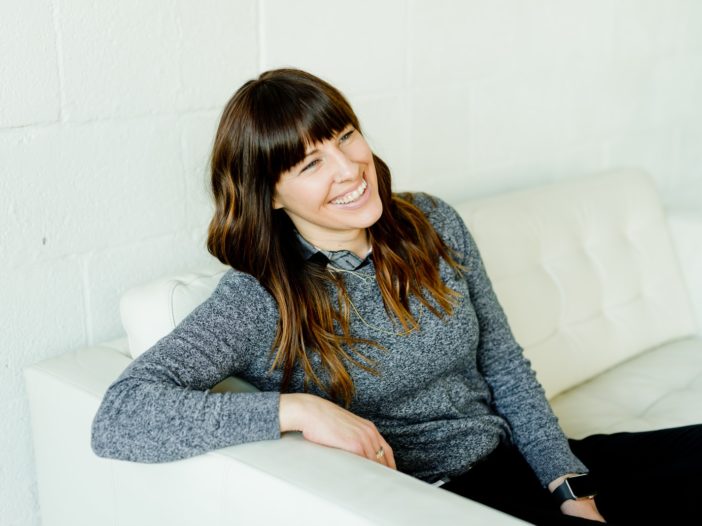
Lisa is a learner, sensitive to do the right thing, and receptive to the input of other people. She’s just another example of one of the true “sweethearts” that I get to work with. When we started therapy she was a “therapist’s dream”: receptive, ready to learn, willing to try any exercise suggested, and highly cooperative. “Easygoing” doesn’t always translate into what’s best for a client.
Behind the scenes
Lisa operated from substantial shame, fear, and the desperation to prove she was worthwhile. Thus, when she was so easy to work with and friendly, often times she wouldn’t assert her actual opinion or thoughts on a matter- in order to keep the peace. This translated into the way she approached everything, especially our exposure work together- and it led to problems with learning and effective growth.
There were many rigid patterns in Lisa’s approach to therapy that had to be undone, broken, and rebuilt before she could be successful.
White Knuckling & Other Problems
At first in her treatment, Lisa catapulted forward into the work. She rationally grasped the importance of facing her fear through exposure AND cutting out her rituals (fear-reducing thoughts and behaviors) so she didn’t interrupt her fear disconfirmation. Easy. Her motivation seemed unparalleled.
However, I started to observe one day something we often call “white knuckling.” When doing an exposure she “wanted” to do, her face and body seemed to say, “I’d rather vomit.” When she walked into the public place she feared going, but wanted to work on, her face was tight, nose scrunched, hands clenched, and eyes scanning her environment. Her face was flush and was uncharacteristically irritated by my occasional questions.
When we paused to assess, I gained for the first time what would be the tip of the iceberg in problems with how she did exposure- which makes all the difference for successful long-term outcomes.
(See the full length, free training on “Common Pitfalls in ERP 4 OCD” for 15 evidence-based problems and solutions that commonly arise in therapy for OCD).
Tear Down & Rebuild: Start from the Ground Up
Though it wasn’t evident from the start, Lisa had developed many unhelpful beliefs about exposure that came out only during exposure (not uncommon, one of the reasons to work with a specialist who can actually be with you in the middle of an exposure):
- I’ll feel better after exposure. If not, I’m doing something wrong.
- I just need to force myself to do the exposure.
- If I don’t make progress I’m a failure.
- Just do it- grit your teeth, close your eyes, and FORCE YOURSELF to do it.
- You’re stupid if you can’t do this- everyone else can!
Have you ever watched Chip and Joanna Gaines’ Fixer Upper? It’s amazing to see the before and after, but they spend serious time assessing and working in the mess before they can show the completed result. Sometimes the house in question is so bad that you must tear down to rebuild. Our mental and emotional and spiritual patterns are the same- we might have to start from the ground up- and that’s always painful to do, initially.
Lisa needed more than a “makeover;” we had to start from the ground up.
How vs. What- And The Key Misunderstanding
If you’re a little fuzzy on how exposures work, check out my entire page dedicated to CBT/Exposure Therapy resources. Exposure Therapy is the systematic and intentional triggering of fear while minimizing- and ideally eliminating- all pathological responses.
Exposure isn’t exposure if you don’t do the latter. That bears repeating:
Exposure isn’t exposure if you don’t change your responses in an exposure.
In fact, an exposure while you’re still avoiding or compulsing is just more avoidance or compulsing- WHICH MAKES THE ILLNESS WORSE!!!
As much as I love getting started quickly in therapy, doing the therapy well and taking our time to build a good foundation is so much better in the long run than rushing into it or just checking exposures off the list.
No Matter What
I’m absolutely not saying what we do doesn’t matter in exposures with OCD, Anxiety Disorders, PTSD, and anything that’s treated with exposure. What we do matters! However, the key misunderstanding I hear early in CBT Therapy for OCD is just a regurgitation of old beliefs and ways that didn’t/don’t work: just get over it. That wasn’t helpful then and it’s not helpful now.
Lisa is still the same sweetheart she’s always been, but she has learned to be assertive, open, and vulnerably honest when there’s an issue or a problem- and there will always be problems. But her calm, poise, and confidence is amazing to see.
How we get over our distress makes all the difference, because it’s in the details of our responses- our lessening avoidance and rituals and increasing confidence and willingness- that begins to solidify our learning and growth. And at the end of the day, when we develop the attitude of, “No matter what comes, I’m in this,” we have proceeded to conquer our distress calling the shots.








Leave a Reply